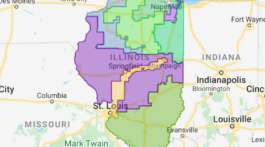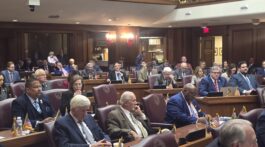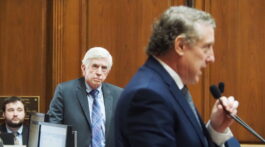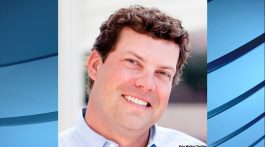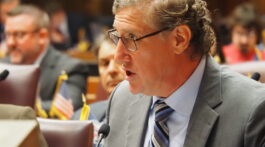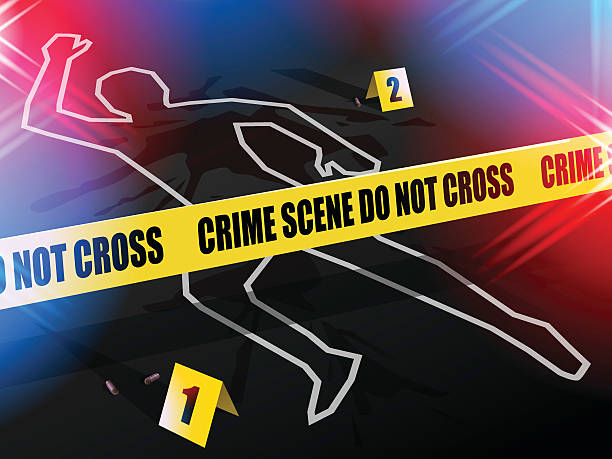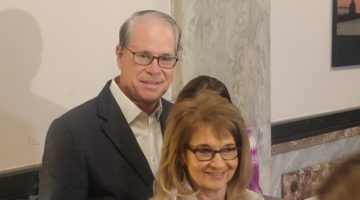by Abdul-Hakim Shabazz
In the wake of the July 4th shooting that killed two teenagers and injured five others downtown, we decided to dig into something that’s long been simmering in the minds of Hoosiers: crime, violence, and how public perception often runs faster—and hits harder—than reality.
Today, we focus on the perception of crime in the downtown area versus the facts.
Spoiler alert: Perception is winning.
Let’s get something out of the way right now: Violent crime in Indianapolis is down. Murders are down. Youth homicides? Way down. But you know what’s up? Public fear. And that, my friends, is the crisis nobody in charge wants to talk about—unless, of course, some smart aleck asks them during a Saturday afternoon press conference.
Because no amount of bar graphs or year-over-year trend lines can undo the gut punch of a mass shooting in the heart of the city—on a holiday weekend—just steps from where families were trying to enjoy fireworks, funnel cakes, and freedom.
Two teenage boys were killed. Five others shot. And the epicenter wasn’t some “bad neighborhood” officials can conveniently ignore between campaign stops. This was downtown. Meridian and Washington. The Mile Square. Supposedly the safest neighborhood in the city. If that’s true, we need to seriously rethink our metrics.
This wasn’t just a tragedy. It was a broadcast signal to every resident, tourist, and convention planner: Indianapolis has a perception problem. And right now, we’re doing a damn poor job managing it.
Let’s talk about that for a moment, shall we? Because while City Hall loves to thump its chest over declining crime stats—and to be fair, some of that is deserved—the reality is that perception has overtaken progress. In politics, perception is the coin of the realm. And right now, ours is flat broke.
And yes, full disclosure: I’ve been part of the crime coverage feeding frenzy before. But that was when criminal homicides were climbing like rent prices—when you couldn’t get through a weekend without a chalk outline and a press release. The crisis was real, and the coverage was warranted. Now, the numbers are finally moving in the right direction—but the public mood hasn’t caught up. Not even close.
And that brings me to one of my favorite sayings: “It’s not what it is—it’s what it looks like.”
And right now, it looks like the streets of Indianapolis are spinning out of control. It looks like leadership is reactive instead of proactive. And it looks like nobody is steering the ship, even if it’s not technically sinking.
Now, I know what some of you are thinking: “But crime really is down!” And you’re right. Violent crime has dropped roughly 17%. Youth homicides fell more than 60% last year. The feds, the Ten Point Coalition, the Peacemakers, and other community groups deserve credit.
But here’s the thing: it doesn’t matter if people don’t feel safe.
Safety isn’t just a stat—it’s a gut check.
It’s walking downtown at night and not tensing up when you hear shouting. It’s letting your kid go to a fireworks show without wondering if they’ll make it back. It’s confidence in leadership. And right now, people don’t have it.
This perception gap is growing by the day. Ask any downtown business owner who watched foot traffic vanish after the shooting. Ask the cops—overworked, understaffed, and burned out after years of doing more with less. Ask the moms trying to keep their kids off the streets while politicians behave like Grandpa Simpson yelling at clouds.
We’ve said it before, and we’ll say it again: you can’t arrest your way out of systemic violence.
But you can sure as hell lose the city if the public stops believing you’re in control.
Mayor Hogsett says downtown is still safe. And under a strict legal definition, he’s not wrong. But safety is now emotional currency. It’s a feeling. It’s trust. And that trust got shot up along with those kids last weekend.
The city’s response? More patrols. Talks of youth curfews. A round of parental-shaming. And the usual spin that it was just an “isolated incident.” Look—you can call it an outlier. But if we keep having outliers every other weekend, they stop being exceptions and start becoming the norm.
So where do we go from here?
First, stop gaslighting the public with “safety” talk while there’s still blood drying on sidewalks.
Acknowledge reality. Address perception. Get uncomfortable.
Second, flood the zone—not just with cops, but with trusted community leaders, Peacemakers, trauma counselors, and people who can walk the blocks and own the narrative.
Third, communicate like it’s a crisis—because it is. Get out of the press release bubble and into the barbershops, block parties, churches, and talk radio. Meet people where the fear lives. Rebuild trust face to face.
Because here’s the bottom line: public safety isn’t just about what’s true on paper. It’s what feels true on the pavement.
And right now, Indy doesn’t feel safe—even if the spreadsheets say otherwise.
We’re not saying it’s all bad. But the clock is ticking.
When fear becomes fact, leadership better show up fast—because perception doesn’t wait.
Abdul-Hakim Shabazz is the editor and publisher of IndyPolitics.Org. He is also an attorney licensed in Illinois and Indiana, and a former candidate for mayor of Indianapolis.


